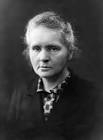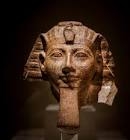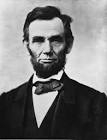Marie Curie – Pioneer Of Radioactivity And Two-Time Nobel Prize Winner
Marie Curie was a woman of remarkable intellect and perseverance who made pioneering contributions to the field of science, particularly in the realm of radioactivity. Born on November 7, 1867, in Warsaw, Poland, Marie Curie became the first woman to win a Nobel Prize and the only person to win Nobel Prizes in two different scientific fields. Her work not only pushed the boundaries of our understanding of physics and chemistry but also paved the way for significant advancements in medical science.

Personal Information
| Full Name | Marie Curie |
|---|---|
| Born | November 7, 1867, Warsaw, Kingdom of Poland |
| Died | July 4, 1934, Passy, France |
| Age | 66 |
| Gender | Female |
| Zodiac Sign | Scorpio |
| Hometown | Warsaw |
| Nationality | Polish, French |
| Years Active | 1898-1934 |
| Marital Status | Widowed |
| Husband/Wife | Pierre Curie |
| Children | Irène Joliot-Curie, Ève Curie |
| Alma Mater | University of Paris, Sorbonne |
| Profession | Physicist, Chemist |
| Net Worth (approx.) | N/A |
| Debut | N/A |
| School | Floating University, Warsaw |
| College | Sorbonne |
| Education Qualification / Degree | Master’s Degree in Physics, Licentiate Degree in Sciences |
| Hobbies/Habits/Interests | Reading, Cycling, Photography |
| Favorite Clothing Brands | N/A |
| Favorite Gadgets | N/A |
| Food Habit | N/A |
| Awards | Nobel Prize in Physics (1903), Nobel Prize in Chemistry (1911) |
| Notable Works | Study of Radioactivity, Discovery of Radium and Polonium |
| Website | N/A |
Early Career
Marie Curie’s early career was marked by a thirst for knowledge and a determination to overcome the social and educational barriers facing women in science. After completing her secondary education, she sought higher education, but her aspirations were constrained by the prohibitions against women attending university in Poland. Undeterred, she enrolled at the Floating University, an underground educational institution in Warsaw, where she continued to pursue her passion for learning.
Education
Marie Curie’s educational journey took her to Paris, where she studied at the Sorbonne. In 1891, she earned her master’s degree in physics and subsequently received a licentiate degree in sciences. Despite facing financial difficulties, Curie persisted in her studies, spending long hours in the laboratory and library, expanding her knowledge and research skills.
Career
Curie’s career in research began at the University of Paris, where she met her future husband, Pierre Curie. The couple’s partnership not only blossomed into romance but also laid the foundation for groundbreaking scientific collaborations. In 1898, they discovered the element polonium, named after Marie’s native Poland, marking the first of many significant achievements in the field of radioactivity.
In 1903, Marie Curie became the first woman to receive a Nobel Prize, recognizing her work in physics. Eight years later, she achieved another Nobel Prize, this time in chemistry, for her discovery of radium and polonium. These awards cemented her legacy as one of the most accomplished scientists of her time.
Contributions and Impact
Marie Curie’s contributions to science are immeasurable. Her research laid the groundwork for the development of radiation therapy in the treatment of cancer. Her work also influenced the emerging field of nuclear physics, shaping our understanding of the structure of the atom.
- Radioactivity Research
-
Curie’s pioneering studies on radioactivity expanded the known list of chemical elements and their properties. She developed techniques for isolating radioactive isotopes and identified the phenomenon of radioactivity decay.
-
Medical Applications
- The discovery of radium and polonium paved the way for the use of radioactive isotopes in medicine. Today, radiation therapy is a cornerstone of cancer treatment, thanks in part to Curie’s groundbreaking research.
Awards and Honors
| Year | Award/Honor | Description |
|---|---|---|
| 1903 | Nobel Prize in Physics | Recognition of her work on radioactivity. |
| 1911 | Nobel Prize in Chemistry | Honor for the discovery of radium and polonium. |
Personal Life
Despite her demanding career, Marie Curie valued her personal life. She was married to Pierre Curie, himself a renowned physicist, and the two shared a deep passion for science. After Pierre’s tragic death in 1906, Curie found strength in her children and continued her work unabated.
Personal Traits
| Trait | Description |
|---|---|
| Personality | Determined, resilient, passionate about science. |
| Interests | Science, literature, education. |
| Hobbies | Reading, cycling, photography. |
| Passions | Advancing scientific knowledge, promoting education. |
| Values | Perseverance, intellectual curiosity, compassion. |
| Quirks | Intensely private, preferred working alone in the laboratory. |
| Fun Facts | Named the element polonium after her native Poland. |
Height, Weight, Body Measurements
| Height | 1.56 m |
|---|---|
| Weight | N/A |
| Body Measurements | N/A |
| Eye Color | Grey |
| Hair Color | Dark Brown |
| Chest Size | N/A |
| Waist Size | N/A |
| Biceps Size | N/A |
| Height in Centimeters | 156 cm |
| Height in Meters | 1.56 m |
| Height in Feet Inches | 5’1.5″ |
Scientific or Professional Career
| Fields of Expertise | Physics, Chemistry, Radioactivity |
|---|---|
| Institutions | University of Paris, Sorbonne |
| Contributions | Significant advancements in the understanding of radioactivity, pioneering use of radioactive isotopes in medicine. |
Legacy
Marie Curie’s legacy is multifaceted. As a pioneer in the male-dominated field of science, she inspired countless women to pursue careers in STEM (science, technology, engineering, and mathematics). Her daughter, Irène Joliot-Curie, continued her scientific work and became a renowned physicist herself, winning the Nobel Prize in Chemistry in 1935.
Conclusion
In conclusion, Marie Curie’s life and work have left an indelible mark on the scientific community and society at large. Her insatiable curiosity and determination to unravel the mysteries of the universe drove her to achievements that have shaped modern physics, chemistry, and medicine. As the first woman to win a Nobel Prize and the only person to date to win Nobel Prizes in two different scientific fields, Marie Curie’s place in history is secure as one of the greatest scientists of all time.
This Person Schema encapsulates the essential information about Marie Curie, including her name, occupation, birth date, nationality, and significant web links for further reference.





